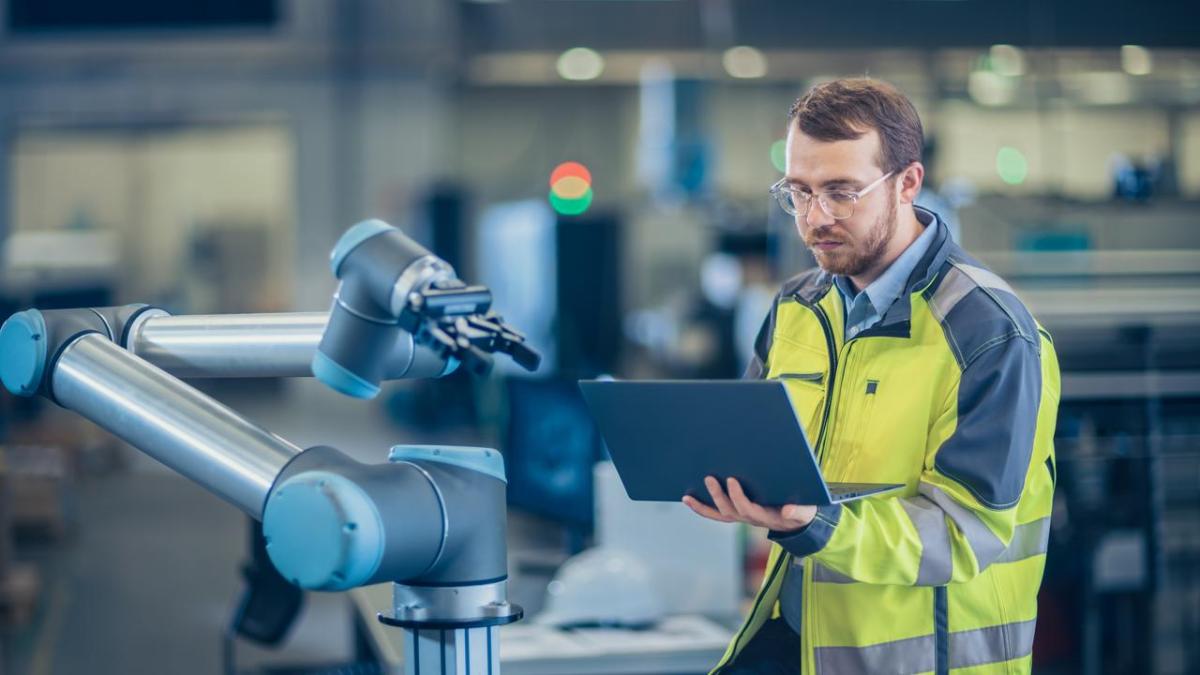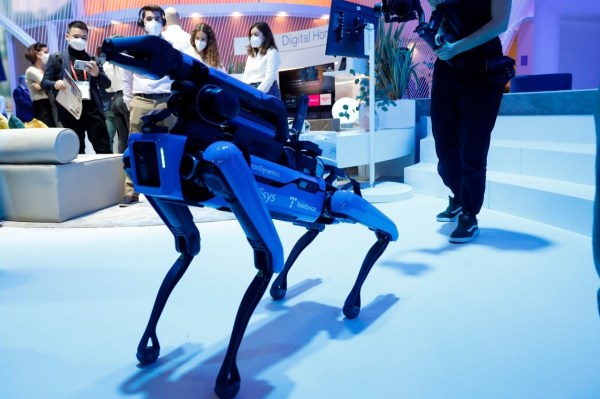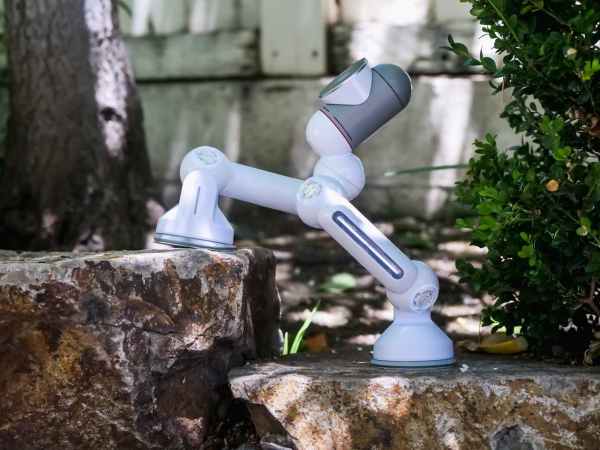What is an industrial robot arm?
An industrial robotic arm is a tool programmed with robotic technology, capable of performing tasks automatically. It consists of a flexible and adaptable structure, which allows it to mimic certain human capabilities. Also known as robotic arms, these machines are driven by a motor that allows them to execute repetitive cycles of the tasks for which they have been programmed over a long period of time.
In addition to flexible and adaptive joints, robotic arms often include sensors, vision systems, software and motion controllers, giving them a greater range of motion and autonomy. Some parts with tactile capabilities are already being developed, such as MIT’s RoCycle “robotic hand” (for the recycling industry). For a robotic arm to be considered industrial, it must have at least 3 main axes of linear control, and be able to execute right-angle movements.
What are industrial robotic arms for?
These tools have reached the status of “indispensable mechanisms” in more and more production phases in different sectors. And although they were originally only used for specific, basic tasks in the automotive industry, technological developments have made it possible to incorporate them into other areas, such as the pharmaceutical or food industry.
Mainly, robotic arms in industry are used to imitate and improve the capabilities of humans during production procedures, as they are designed to act automatically, and perform large volumes of repetitive and mechanical tasks with high precision and in a constant manner. In addition, they have the ability to work independently, or collaboratively with the company’s human team or with other robots.
Industrial robots can be used in multiple ways, allowing the robot to be part of different stages of production. They are typically used to handle heavy materials, carry out hazardous work, inspect tasks and automate processes in order to achieve greater profitability for companies.
What types of industrial robotic arms are there?
Today, industrial robotic arms are classified by the shape and design of their joints, the possibility of movement and the functions they can perform. Here are some of the most common:
- Cartesian. The Cartesian robot consists of two or three axes, and is named after René Descartes’ Cartesian coordinate system. In terms of mobility, the three axes can be moved in X-Y-Z. It also has an additional joint that provides rotational movement. This robot is used for screwing, welding, sealing and inspection.
- Cylindrical. This robot can perform cylindrical movements, as it consists of a revolute joint and two prismatic joints. Together they allow rotation around the central axis. It is generally used for assembly and welding tasks.
- Articulated. This is a type of robot that has at least three joints that rotate on themselves, allowing it to perform complex tasks. It is able to rotate with greater precision and is therefore often used for welding and painting. The articulated automaton is very common in the automotive industry.
- SCARA. The SCARA robot has great versatility, as it has 4 axes, with movements in X-Y-Z, and rotation around the Z axis. It works at high speed, and is therefore used in many different sectors, from vehicle production to pharmaceutical distribution.
- Spherical/Polar. Considered the first modern industrial robot, it has a simple design and is very similar to the cylindrical robots, only the vertical linear axis is replaced by an additional rotary axis. This robot can rotate vertically, and is designed for simple tasks.
- Parallel/Delta. The parallel robot has a unique design that allows it to reach high speeds. It is characterised by several moving arms connected to a central base, configured with a parallelogram. It is commonly used for low payload applications, such as fitting or packaging.
- Anthropomorphic. The anthropomorphic robot has a close resemblance to a human arm. It is built under three positional joints that would correspond to a person’s arm, forearm and wrist. Thanks to its robustness, it is a good complement to work collaboratively with operators.
Benefits of robotic arms in industry
Different types of robotic arms bring multiple benefits to industrial work, not only improving production efficiency, but also reducing the need for skilled labour.
Automated arms improve the safety of companies, helping workers to work in a less hazardous environment. Thanks to their repetitive mechanisms, they allow the production line to be maintained throughout the day, since unlike humans, these tools do not suffer from fatigue.
On the other hand, the components of robotic arms allow for more consistent and precise tasks. This is a very important advantage in sectors such as the automotive industry, since poor precision can lead to possible corrosion of the bodywork or errors in safety systems.









